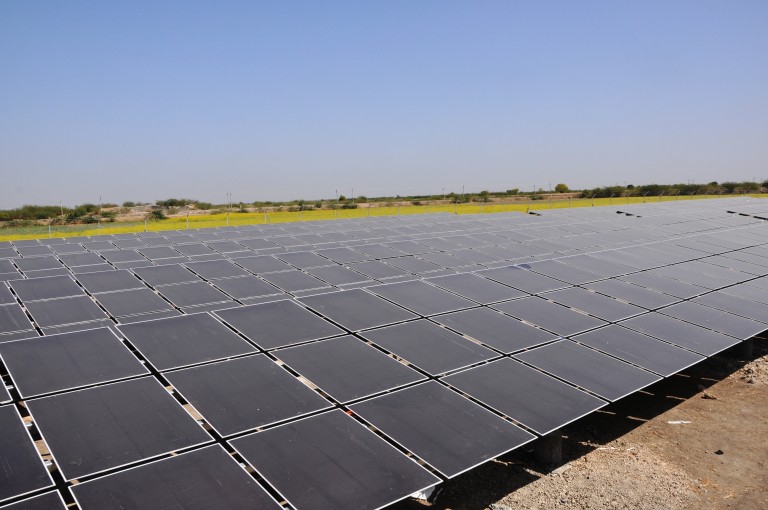Indian prime minister Narendra Modi reiterated the nation’s extremely ambitious goal of reaching 175 gigawatts of renewable energy capacity by the end of 2022, including 100 gigawatts of solar, while kicking off the International Solar Alliance Summit in New Delhi on March 11.
Why does that matter? Adding a vast amount of clean energy generation is crucial for increasing electricity access in a nation where hundreds of millions lack it, without adding massive amount of greenhouse-gas pollution (see “India’s Energy Crisis”). But the well-intentioned target looks nearly impossible to achieve.
Why it probably won’t happen: To date, India has installed almost 17 gigawatts of solar power. To get to 100 gigawatts, it will have to add nearly 17 more every year for the next five years. That’s more than twice the solar capacity that the United States added in 2016.
Integrating such a huge amount of intermittent renewable energy would also create substantial storage and transmission challenges, particularly in a nation with a famously creaky electricity grid.
The big picture: The International Solar Alliance is a coordinated effort among equatorial nations to accelerate investment into and construction of solar energy, with a goal of building one terawatt of capacity by 2030. At the summit, French president Emmanuel Macron committed to spending another $700 million by 2022 and called on private investors to contribute to the broader goal of investing some $1 trillion in solar projects.
Correction: This story was updated to clarify that India is striving to reach 175 gigawatts of renewable energy capacity total by the end of 2022, not add that amount on top of what already exists.

